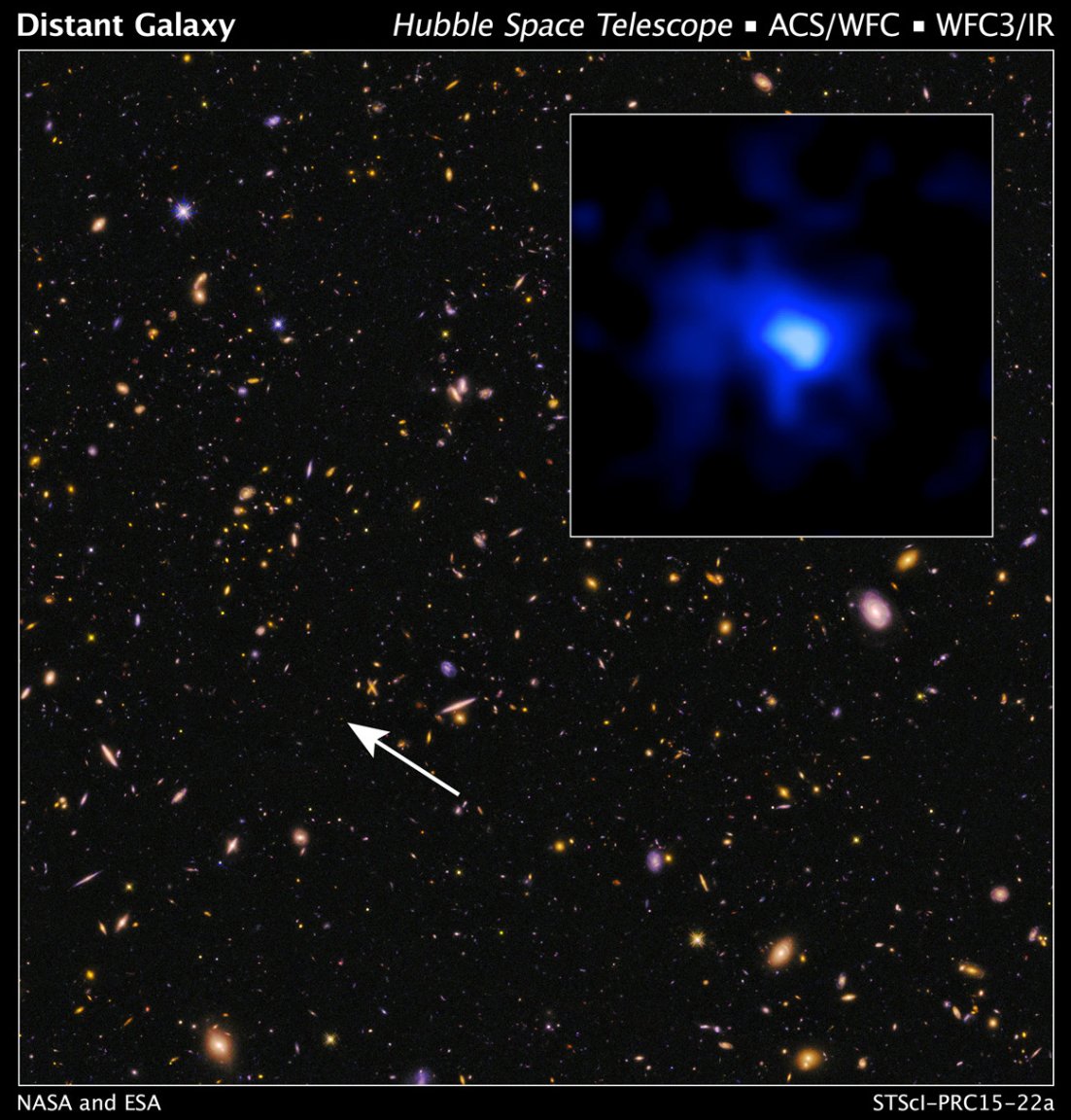

Hot on the heels of its historic 25th birthday, the Hubble Space Telescope—with help from NASA’s Spitzer Space Telescope. and the W.M Keck Observatory—has stumbled across the most distant galaxy to date.
Known as EGS-zs8-1, this distant source of light first formed nearly 13 billion years ago, when the universe was roughly 5 percent of its current, 13.8-billion-year age. Despite its distance, it remains one of the brightest and most massive galaxies in the distant universe—only we’re seeing it at an early stage in it, and the universe’s, evolution.
“It has already grown more than 15 percent of the mass of our own Milky Way today,” said Pascal Oesch, lead author of the study. “But it had only 670 million years to do so. The universe was still very young then.”
In fact, when the foundation of EGS-zs8-1 was laid, the universe was in the midst transitional phase—the first was the time in which protons and electrons began to combine and forge neutral hydrogen atoms; The second—known as the epoch of reionization—occurred when new generations of stars ionized the atoms, leaving them in a more excited state.

The international team of researchers—led by astronomers from the University of California and Yale University—plucked EGS-zs8-1 from a preexisting data pool, which was collected for the Cosmic Assembly Near-infrared Deep Extragalactic Legacy Survey (CANDELS ).This image combines observations taken by Spitzer and Hubble, and the Hawaiian W.M Keck Observatory was used to confirm its distance from planet Earth. Ultimately, determining the precise distance to an object located in the most distant reaches of space is a complicated process (often dealing with redshift), with only a tiny number of galaxies this distant ever having been measured to date.
Measurements of record-setting-galaxy EGS-zs8-1 were only made possible by a powerful tool installed on Keck in 2012—the Multi-Object Spectrometer For Infra-Red Exploration (MOSFIRE) instrument; a near-infrared multi-object spectrograph that effectively increased the telescope’s firepower to the point that it now allows astronomers to glean insight on multiple galaxies simultaneously.
“The new distance measurement also enabled the astronomers to determine that EGS-zs8-1 was still forming stars very rapidly, about 80 times faster than our Milky Way galaxy today (which has a star formation rate of one star per year),” NASA revealed in their press release. They continue:
These new Hubble, Spitzer, and Keck observations together give a new glimpse into the nature of the infant universe. They confirm that massive galaxies already existed early in the history of the universe, but that their physical properties were very different from galaxies seen around us today. Astronomers now have very strong evidence that the peculiar colours of early galaxies seen in the Spitzer images originate from a very rapid formation of massive, young stars, which interacted with the primordial gas in these galaxies.
The new observations underline the very exciting discoveries that NASA’s James Webb Space Telescope will enable when it is launched in 2018. In addition to pushing the cosmic frontier to even earlier cosmic times, the Webb telescope will be able to dissect the infrared galaxy light of EGS-zs8-1 seen with the Spitzer Space Telescope and will provide astronomers with much more detailed insights into its gas properties. “Our current observations indicate that it will be very easy to measure accurate distances to these distant galaxies in the future with the James Webb Space Telescope,” said Garth Illingworth of the University of California, Santa Cruz. “The result of Webb’s upcoming measurements will provide a much more complete picture of the formation of galaxies at the cosmic dawn.”
[Reference: HubbleSite]